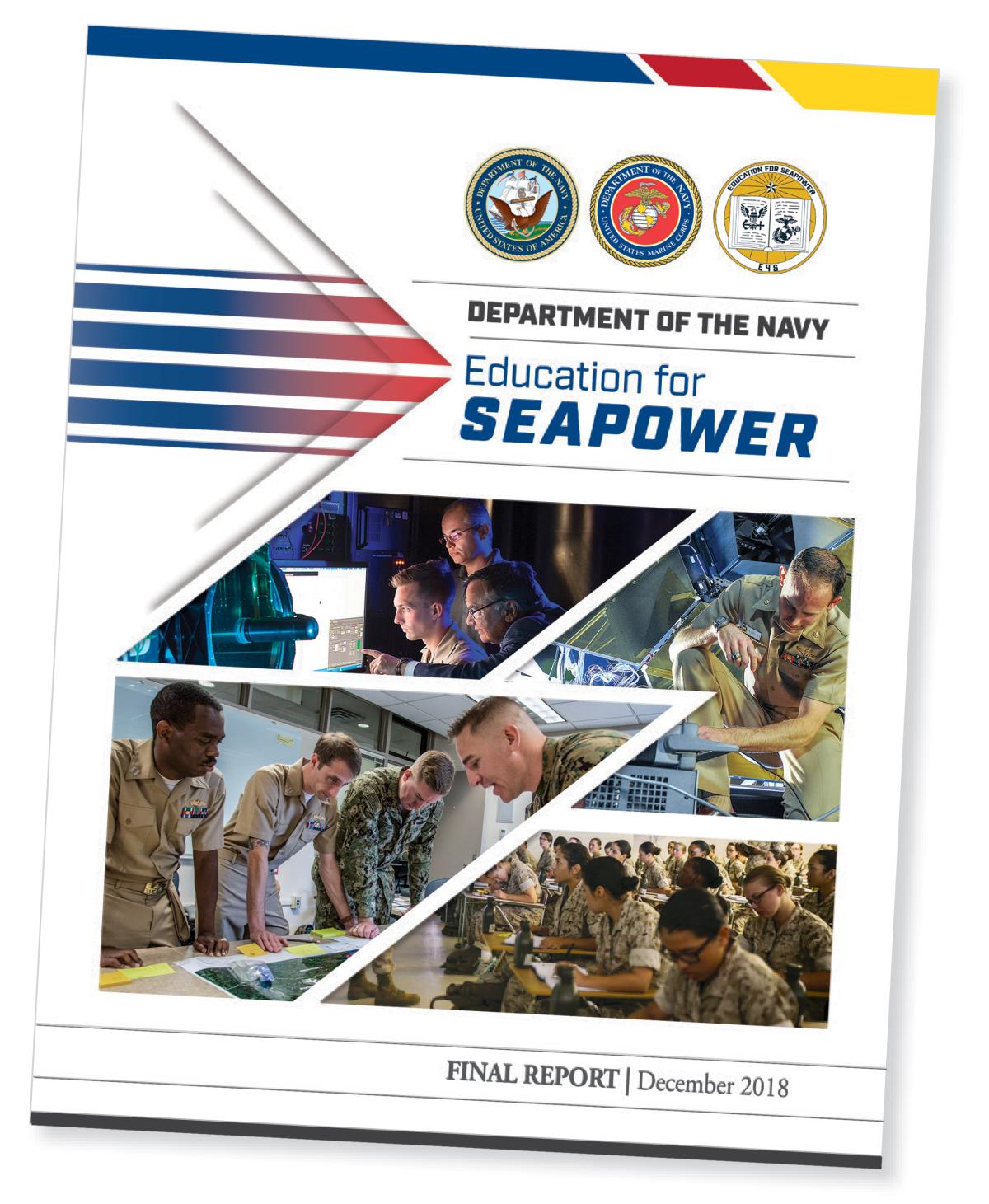In his December 2018 “A Design for Maintaining Maritime Superiority (Version 2.0),” Chief of Naval Operations (CNO) Admiral John Richardson updates the four color-coded lines of effort (LOEs Blue, Green, Gold, and Purple) from Design 1.0 with ambitious goals to develop future naval forces for an era of renewed great power competition. Design 2.0 establishes specific objectives and timelines for key modernization priorities, including shipbuilding programs, military personnel management and training systems, and the Navy’s partnership with industry.
Most tasks supporting these objectives require a combination of significant investment, long-range planning, and cultural shifts. However, the specific action under LOE Gold to create a warfighting directorate headed by a vice admiral on the CNO’s staff (OpNav N7) could be implemented expeditiously and economically by leveraging expertise, authorities, and relationships already in place—merging the Deputy CNO for Operations, Strategy, and Policy (OpNav N3/N5) with the Navy Warfare Development Command (NWDC).
In Design 2.0, OpNav N7 will “be responsible for coordinating and aligning the Navy’s education, experimentation, exercise, and analytic efforts.” Complementary to its responsibility for Navy education, OpNav N7 also will “align leader development across accession sources.” The goal is to establish “synergy between how we fight and how we learn,” which then will “accelerate our combat effectiveness.” For the Navy, those objectives historically have lacked a principal advocate on the CNO’s staff. The responsibilities instead are spread among the CNO’s staff, fleet commanders, the Naval War College, the Naval Education and Training Command, the Naval Academy, NWDC, and most recently, the community-specific warfighting development centers. Designating a three-star admiral as OpNav N7 to be the primary sponsor advocating for those objectives and the commands that must meet them will produce the synergy the CNO desires, while better aligning the Navy with the Joint Staff and the other services.
Because the Navy does not have additional flag billets (particularly at the three-star level), however, leveraging current organizations and their funding provides the most efficient and logical path to rapidly establish OpNav N7. The service should redesignate the current OpNav N3/N5 to become the Deputy CNO for Force Development, Operations, Plans, and Strategy (N3/N5/N7) and provide the incumbent vice admiral with additional staff members, but still fewer than 10. The N7 function within N3/N5/N7 would be led by a Navy captain as OpNav N71, representing the activities of the existing stakeholder organizations on the CNO’s staff in a unified fashion.
With an OpNav code dedicated to force development, but aligned closely with its operations, strategy, and policy counterparts in N3/N5, the aforementioned training, education, and doctrine commands would gain a direct advocate on the Navy’s Pentagon team. In addition, those organizations would be able to benefit from timely strategic and fiscal guidance directly from the OPNAV level to help align efforts across this new force development enterprise.
The Washington–Norfolk Nexus
The most radical aspect of merging OpNav N3/N5 with NWDC would be designating the commander of NWDC (currently a rear admiral) as Assistant Deputy CNO (OpNav N7B), which would create a direct linkage between OpNav in Washington, D.C. and NWDC in Norfolk, Virginia. There is precedent for this organizational model. The Chief of Naval Research commands the Office of Naval Research while simultaneously serving as Director, Innovation, Tech Requirements, and Test and Evaluation (OpNav N94).
This arrangement also mirrors the Joint Staff organization for force development (J-7), which operates a dual-location model (Washington and Suffolk, Virginia). Among the commands with equities in the Design 2.0 force development priorities, NWDC would be the logical home for the newly formed OpNav N7 South, because it is already responsible for key components of force development, including doctrine, concepts, experimentation, lessons learned, and modeling and simulation. In addition, NWDC works closely with Joint Staff J-7 for doctrine, concepts, and lessons learned, so providing NWDC with a seat at the OpNav table would better align the Navy staff to adjudicate Joint Staff tasking in these areas. Furthermore, with its Norfolk location, NWDC remains well-suited to coordinate locally with Joint Staff J-7 South in Suffolk, as well as with U.S. Fleet Forces (USFF) command in Norfolk.
The Navy four-star fleet commanders in Norfolk, Pearl Harbor, and Naples, Italy, have important equities in force development, and shifting NWDC from its direct reporting relationship to USFF would streamline communication among the four-star headquarters, allowing force development to be more responsive, synchronized, and agile. Education is a critical and wide-ranging component of force development, and an OpNav N7 organization in the Pentagon ideally would be situated to coordinate and improve education planning and implementation with the Joint Education Branch and the Chief of Naval Personnel (OpNav N1). The recently released Department of the Navy Education for Seapower study also will influence how OpNav organizes for education in the future.
An OpNav N3/N5/N7 organization encompassing NWDC would provide a nimble construct to achieve a key supporting task to LOE Gold, while also advancing a task within LOE Green (“Achieve High Velocity Outcomes”). The latter task, “to strengthen the synergy between development of naval doctrine and capability,” requires NWDC (and others, including the Naval War College and the warfighting development centers) to assist two new development hubs—one for capability (East Coast) and one for concepts (West Coast), designated as DevGruEast and DevGruWest, respectively. As Navy centers of excellence, these organizations will be assigned to “exploit the constructive, iterative dynamic between capability and concept development.” Incorporating NWDC into an OpNav N3/N5/N7 organization would facilitate the necessary coordination for this to unfold.
Design 2.0 provides a voyage plan toward improved force development. Subject matter expertise, innovative thinking, and strong relationships will be of central importance to accomplish tasks articulated in each LOE. To synchronize these efforts, it will be critical to establish well-defined lines of authority and avenues for coordination—running through OpNav N3/N5/N7—and this can happen rapidly by fully incorporating NWDC into the new OpNav N7.




